For those keen to learn more about Growth Mindset, below are some Learning Videos on Growth Mindset by Dr Carol Dweck. You may also contact us to find out more.
Tag Archives: Dr Carol Dweck
15 Ways To Develop A Growth Mindset
So, let’s start with: What is a Growth Mindset?
Stanford psychologist Dr. Carol Dweck and author of “Mindset: The New Psychology of Success” explains how there are two types of mindsets: growth and fixed mindset.
Dr Carol Dweck describes how a growth mindset embraces challenges and views failure “not as evidence of unintelligence but as a heartening springboard for growth and for stretching our existing abilities.” While a fixed mindset grips onto the belief that intelligence and talents are static, and success is accomplished solely based on talent and little effort. Check out the summary of Growth Mindset and Fixed Mindset below
Growth Mindset vs Fixed Mindset
Growth Mindset
It’s where you want to be
- Embraces challenges
- Perseveres in spite of failure
- Believes that people can increase their intelligences of skills
- Is inspired and motivated by the success of others
- Wants to learn
- Accepts and embraces criticism
Fixed Mindset
It’s what you have
- Avoid challenges
- Gives in in the face of hardship
- Believes that intelligence and skills are what you are born with and can’t change or develop.
- Is threatened by the success of others
- Believes they know everything already
- Ignores or dismisses criticism
Growth Mindset and Fixed Mindset – a quick guide
The growth mindset definition is:
People with growth mindsets believe that skill and intelligence are something that people can develop. They believe that while people have inherent qualities and traits, success comes from constant personal development.
The fixed mindset definition is:
By contrast, those with fixed mindsets believe that talent and intelligence are something you either have or you don’t.
That is, some people are good at certain activities, and others excel in different areas. They don’t believe that practice, failure and strategy development are key to developing talent or intelligence.
What Dweck discusses is that those who do develop a high degree of talent are more often people with a growth mindset.
It works both ways.
An important finding of Dr Carol Dweck’s research is that those with growth mindsets experience greater success and skill development.
15 ways to develop a growth mindset

Now that you have an idea of what a growth mindset is (vs a fixed mindset), let’s dig a little deeper. We compiled 15 techniques to help you unlock the growth mindset part of your brain. Let’s get started!
- Determine where you sit now. Do you always make effort to improve, get feedback, or would you describe yourself as having a fixed mindset?
Knowing where you stand, is the first step. You can’t tell where to go if you don’t know where you are. - Cultivate your sense of purpose. Take time to reflect and find your purpose. What is it about the growth mindset that motivates you to change? What benefits do you see a growth mindset bringing to your life? Understanding this will give you purpose especially during the difficult stages of developing this worldview.
- Reflect. Most of us take time to reflect on successes – develop the new habit to also take time to acknowledge, reflect, and embrace all your failures, and what you have learnt. Becoming aware of your areas of improvement is the stepping stone in cultivating a growth mindset. Hiding from your weaknesses means you will never overcome them, inhibiting your success.
- View Challenges as Opportunities. To quote Elbert Hubbard, “The greatest mistake you can make in life is to be continually fearing you will make a mistake.” Part of developing a growth mindset is shattering the negative perception of a challenge. Embrace challenges and view them as fruitful learning experiences for self improvement, that you would not get otherwise.
- Stop Seeking approval. When you prioritise getting approval over learning, you sacrifice your own potential for growth.
- Cultivate grit. Grit gives that internal push to keep moving forward and fulfill your commitments.
- Change your perspective on failure. Start viewing failure not as a sign of inability, but as part of the process of learning. Even the world’s greatest athletes, leaders, artists, scientists all started out as new kids on the block with little talent or expertise.
- Seek constructive feedback. A growth mindset proactively seeks feedback from peers, friends, and leaders. It’s a chance to find lessons, learn from mistakes, and target efforts into skills that matter in the long run.
- Turn criticism around until you find its gift. The purpose of criticism is to make things better. Someone else can see what you are doing from a slightly different perspective than you and may have some valuable suggestions for you. If you open up to hearing suggestions, you can more easily develop your growth mindset
- Notice how you speak and act. Observe how you talk about talent and skill. Do you find yourself saying things like, “He’s just naturally talented”, “I’m born to be bad with this”?
- Use the word “yet” more often. This is a simple one. Whenever you catch yourself thinking “I’m not good at this,” add the word “yet”. For eg, “I’m not very good at this yet.” Incorporating the word “yet” into your vocabulary signals that despite any struggles, it is a matter of time and little effort before mastery.
- Jot down goals. Growth mindset people are aware that once one goal is down they have others lined up to pursue. Create clear, realistic goals based on your passion and purpose. And be sure to give yourself enough time to conquer them thoroughly.
- Be realistic. It takes time, sometimes a huge amount of time, to learn a new skill, or a new language or to how to become a good teacher. Keeping this in mind is useful in nurturing a growth mindset.
- Identify opportunities to celebrate the success of others. When others around you succeed, celebrate! In addition, get curious about what made them successful. And, even better, ask them. Engage others to get insights on how they approached the challenge, what efforts they undertook to get there. Yes, do this!
- Take ownership of your attitude. Only you can decide what attitude you hold. Fixed mindsets tend to harbor negative and pessimistic attitudes. Kick those thoughts out now. The power of positive, optimistic thinking can shift your mood instantly that not only inspires you but others around you as well. [Are you doubting this? Well, try it out now :)]
Perhaps the best way to sum up the essence of Growth Mindset vs Fixed Mindset is this: “It’s not how good you are, but how good you want to be.”
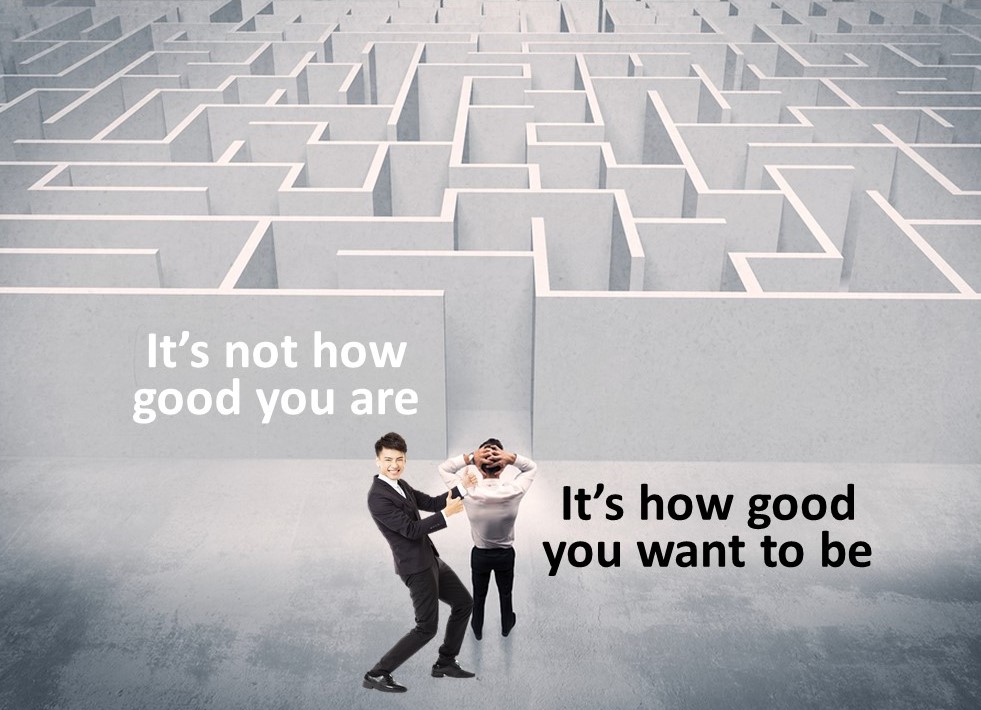
Recommended Readings on Growth Mindset vs Fixed Mindset
- Why Having A Growth Mindset Matters To You
- 15 Ways To Develop A Growth Mindset
- How To Maximise Your Personal Development with MBTI and Growth Mindset
- Learning Videos on Growth Mindset and Fixed Mindset
- Why Companies are recruiting employees with a growth mindset
- Why Growth Mindset Should be part of your personal brand
- How A Fixed Mindset Killed Kodak, The King of Film

Lunch and Learn – Growth Mindset Talks
If you would like to have a
Growth Mindset Lunchtime Talk (1 hr), Growth Mindset Talk (2 hrs), or a
Growth Mindset Workshop (half day or 1 day), or a
Growth Mindset Course (2 days),
please contact 36 HR Training and Consultancy, explaining what your expectations are, and WHY you would like to have the talk. We conduct all training, talks, workshops in both zoom or in physical classroom mode, but recommend zoom mode for now due to the pandemic.
Growth Mindset Insight – How To Maximise Your Personal Development with MBTI and Growth Mindset

Why A Growth Mindset Can Harness The Power of MBTI Self Awareness
Adopting a “growth mindset” is fundamental to success for organisations and individuals. If you believe your abilities are innate and can’t be significantly improved or changed, your mindset may be described as “fixed.” You tend to view failure as a result of lack of talent or poor fit. (meaning little room for growth). While acknowledging that there is such a thing as aptitude, a healthier outlook involves acknowledging that improving one’s life almost always requires adapting, learning new skills and generally remaining flexible. And that’s the essence of a Growth Mindset. This helps you to build a healthy personal brand.
The concept of a growth mindset and its opposite, a fixed mindset, was developed by psychologist Dr Carol Dweck. According to Dweck’s research, and her book, Mindset: The New Psychology of Success, individuals vary in their understandings of where their skills and abilities come from.
A growth mindset is when you believe you can acquire almost any skill or ability with enough effort. In other words, those with growth mindsets believe they can grow (hence the name). With a growth mindset, you’re more likely to soil your hands, and push forward in the face of challenges and setbacks and eventually find success.
The Path To A Growth Mindset Starting With Self Awareness
Taking the Myers-Briggs Type Indicator (MBTI) assessment to identify your personality type is an important self-awareness exercise, but it doesn’t tell the complete story of who you are and what your personal brand represents. This is especially the case for people with growth mindsets.
Let me explain. Understanding your personality type as a preference for one side or the other can help you also understand that you have the “choice” to use the opposite side of that preference when the situation calls for it. This is part of growing as a person, and exercising that “choice” and effort encapsulates the Growth Mindset essence.

The best way to grow is to have a benchmark understanding of your current state. On an individual level, it necessitates self awareness. Personality type, as explored through the framework of the Myers-Briggs Type Indicator (MBTI) assessment, is one of the quickest and most powerful ways to gain self-awareness and helps you gain a better view of who you are at your most natural “shoes-off” self. It does so by exploring personality preferences along 4 key dimensions, and which we will illustrate with how these understanding can be the basis for growth:
• ![]() Introversion/Extraversion: How We Direct and Receive Energy
Introversion/Extraversion: How We Direct and Receive Energy
Do we tend to focus attention on the outside world of people and activity (extraversion) OR the inner world of thoughts and feelings (introversion)?
To illustrate how a growth mindset approach makes a difference: For someone who prefers introversion, you live in the world of introversion and miss out on the external world. You may prefer to reflect before acting, have a depth of interests, keep a small number of close friends, but when you embrace a growth mindset, you can learn to communicate through talking, working out ideas with others, engaging with more people and learning through these.
• ![]() Sensing/Intuition: How We Receive Information
Sensing/Intuition: How We Receive Information
Do we trust information gathered through the five senses (sensing), and/or our experiences OR on more abstract focus on patterns and possibilities (intuition)?
To illustrate how a growth mindset approach makes a difference: if you have a preference for intuition, and embracing the growth mindset, you stretch yourself by learning how to apply the sensing side to more fully comprehend situations – by also considering facts, and paying attention to details and evidence.
• 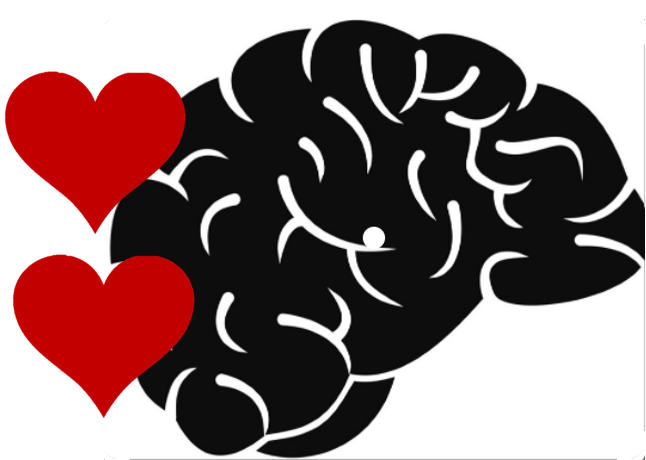 Thinking/Feeling: How We Decide and Come to Conclusions
Thinking/Feeling: How We Decide and Come to Conclusions
Do we make decisions based on objective logic (thinking) OR on our values and priorities (feeling)?
And again, to illustrate how a growth mindset approach makes a impact on your development: if you prefer to make decisions based on hard data, benefits, justifications, you know have been objective. To embrace a growth mindset, you make the extra effort to consider your own values, others’ feelings, putting yourself in the shoes of others. This allows you to stretch yourself to consider a more rounded picture.
•  Judging/Perceiving: How We Approach the Outside World
Judging/Perceiving: How We Approach the Outside World
Do we prefer to remain decisive, organised and in control (judging) OR do we like to keep our options open and remain spontaneous and flexible (perceiving)?
To illustrate how a growth mindset approach makes an impact: if you prefer to always be organised in your plans, in embracing a growth mindset, you allow yourself to consider options when they arise.
MBTI Awareness and Growth Mindset Empowers Us
Now this is the interesting fact: our natural MBTI preferences tend to influence our behaviours, but do not dictate them. This means the more aware we are of what our natural preferences are in any given situation, we can consider what behaviour best serve the circumstances and adjust our behaviour accordingly – therein lies the power of Growth Mindset and MBTI.
Illustration of Growth using MBTI as benchmark: Introversion/Extraversion And The Company Brainstorm
One scenario that commonly takes place in the office is the team brainstorm discussion. Let’s ponder over this.
The way a person participates in a brainstorm discussion is highly affected by their preference for either extraversion or introversion.
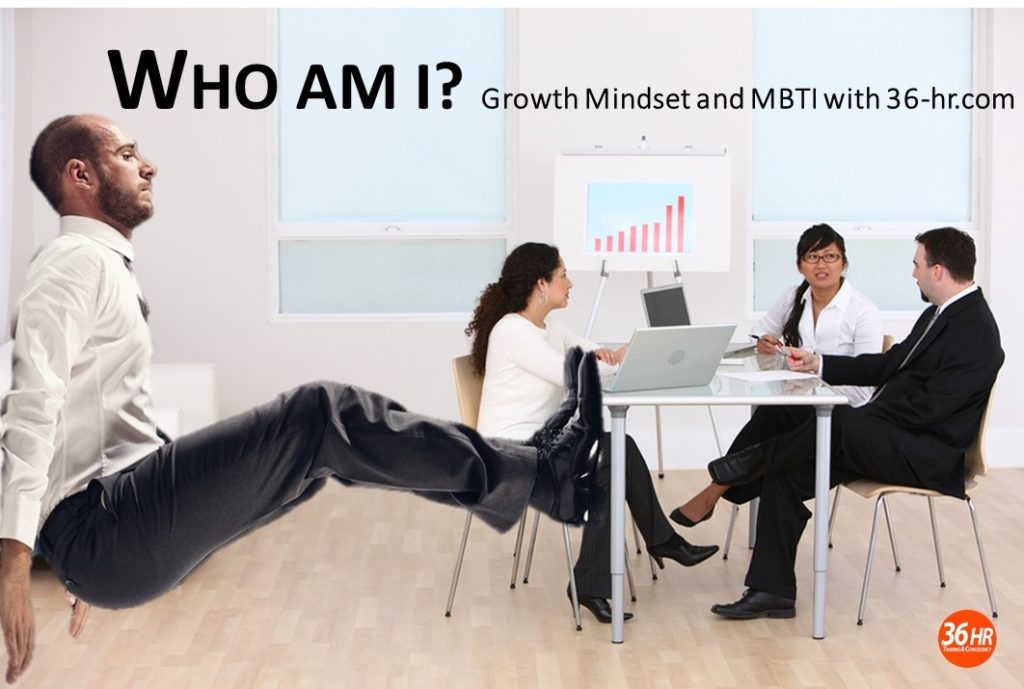
Those who prefer introversion like to think things through in order to understand them, internalise their thoughts until they are (almost) perfect and, more often than not, like to stay in the background. In a line of work that requires regular brainstorming, it’s easy to imagine that they might feel themselves at a serious disadvantage, especially if colleagues are fluently sharing creative ideas and impressing their boss, while those who prefer introversion appear stuck trying to formulate shareable thoughts and break free to speak!
If you prefer introversion, you may not realize why you don’t like to brainstorm with others. You may only know that the process is bothersome if not excruciating, and this lack of awareness can be extremely career inhibiting. But if you understand that this discomfort is a function of personality preference, you can develop techniques for working around the more difficult parts.
However, with a growth mindset, you can even turn what you might perceive as a weakness into a strength.
For example, you can prepare by researching on the topic to be brainstormed, so that you can come with more well-formulated notes/thoughts. And consciously remind yourself that in brainstorming, an idea does not have to be perfect before it is articulated. It’s perfectly alright to share your ideas with your team – and let others critique and in the process, get a much more rounded view thus allowing improvement to be far better than if you had done everything on your own.
On the other hand, those who prefer extraversion find it easy to share openly, and in fact prefer talking things through. They more they share, the more their ideas flow.
Conversely, looking at the extraverted, it would appear that they are enjoying an advantage. This, however, is not necessary the case due to the ill-will that might be generated if the colleagues view the extraverted as perpetually “talking over” them. This can pose unseen future circumstances.
Consider for a moment that you are a new leader of a team, and you need to get the feedback of everyone in your team. You might be tempted to (incorrectly) interpret the silence of some team members to mean that they don’t have any ideas or lack the intellect or skills.
But if some of the other folks in the room (or on the Zoom call, as is more often the case in today’s world) prefer introversion, you’re probably missing out on valuable input from your team. If you are aware of your own tendencies, you can change your behaviour to grow in new directions.
Where you might be naturally inclined to express your thoughts, you can train yourself to pause, listen and ask questions, probing more deeply into the insights of other team members, building better relationships with colleagues and gaining valuable insights.
Personality Type, with A Growth Mindset, Helps Us Chart A Path For Growth
A growth-mindset approach to understanding and acting on your MBTI preferences gives you a much more fulfilling self development experience based on types. I am certain that Isabel Briggs Myers did not develop this assessment to stereotype you or to box you up. When you look at the MBTI table of 16 types, think of it as a collection of 16 rooms instead of a series of 16 boxes: While we all have a favourite room, we need to consider when and how can we use the other rooms where we can be the best versions of ourselves, in the most appropriate circumstances. The more we learn to flex or learn the ‘opposite behaviour’, the more developed we become.
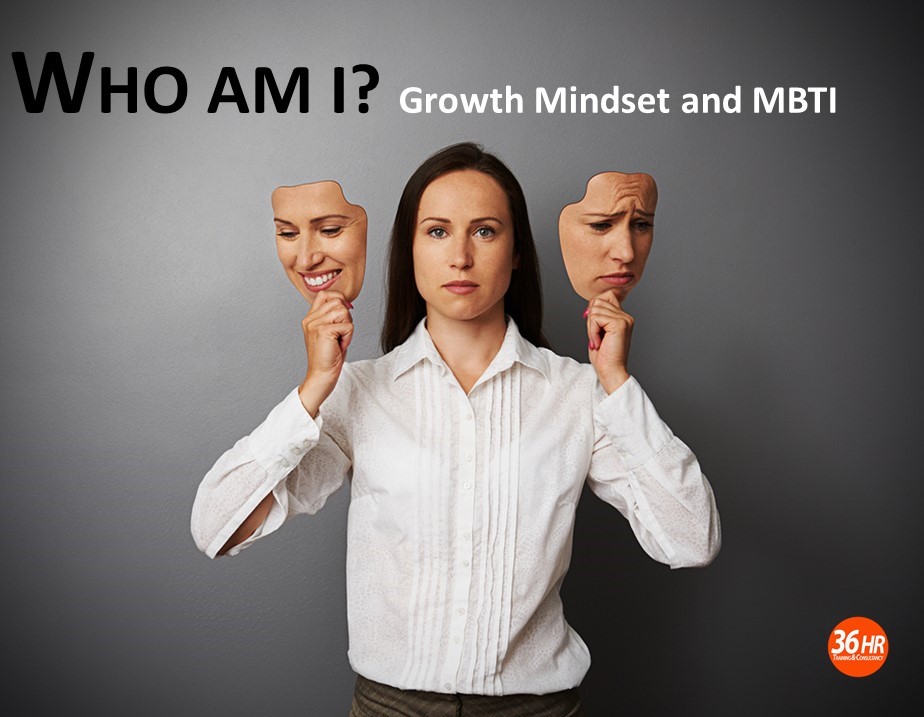
The hardest thing to change is to disrupt ourselves. Do you agree?
contact us for Growth Mindset, MBTI or Personal Branding workshops
Recommended Readings on Growth Mindset vs Fixed Mindset
- Why Having A Growth Mindset Matters To You
- 15 Ways To Develop A Growth Mindset
- How To Maximise Your Personal Development with MBTI and Growth Mindset
- Learning Videos on Growth Mindset and Fixed Mindset
- Why Companies are recruiting employees with a growth mindset
- Why Growth Mindset Should be part of your personal brand
- How A Fixed Mindset Killed Kodak The King of Film Industry
Why Having A Growth Mindset Matters To You

In recent years, the term ‘Growth Mindset’ has become very popular and employers are now looking for employees with a strong growth mindset as part of their personal brand. Companies are seeking leaders with a growth mindset to lead the companies in uncertain times. Many of my clients have also asked me to share more about growth mind vs a fixed mindset.
Do you know that you were born with curiosity and creativity but your experiences in life, school and work can unintentionally mute these qualities. Now it’s time to take control and take it back with a growth mindset.
WHAT IS A GROWTH MINDSET? WHY SHOULD I BOTHER ABOUT GROWTH MINDSET?
First let’s talk about WHY Growth Mindset and what exactly are a “mindset”, a “growth mindset and a fixed mindset”.
Your mindset is the sum of your thoughts and beliefs that determine how you make sense of yourself, your immediate environment, and the world.
According to Dr Carol Dweck, a researcher and Professor of Psychology at Stanford University, there are 2 types of mindsets: a Growth mindset and a Fixed mindset.
Those people with a growth mindset understand that knowledge can be acquired, intelligence and skills can be developed. With a growth mindset, people focus on improvement instead of worrying about how smart they are. They work hard to learn more and get smarter. A “growth mindset,” thrives on challenge and views failure not as evidence of unintelligence but as a great chance to learn and build upon existing skills and abilities. They believe that learning doesn’t stop the moment you leave school or university. With time and effort, their intelligence and knowledge can grow because they recognize that their effort influences their success, so they spend more time practicing or learning, which leads to higher levels of achievement.
As can be seen, adopting a growth mindset is not just essential in your life, it’s critical.
On the other hand, a “fixed mindset” assumes that our character, intelligence, and creative ability are innate characteristics that cannot be changed. People with a fixed mindset only believe that they have been successful when their performance or intelligence measures higher than the standard. They constantly strive for success and avoid failure at all costs because they fear other people will view them as being innately unintelligent.
Having a fixed mindset leads to a belief that intelligence and talent are limited, so there is no use in working to develop or learn. And, because they believe they were born with a restriction on their talent, those with a fixed mindset put this same restriction on their effort– and subsequently, their success.
SUMMARY OF GROWTH AND FIXED MINDSET
To help you understand, here’s a pictorial form of the differences between Growth and Fixed Mindset.
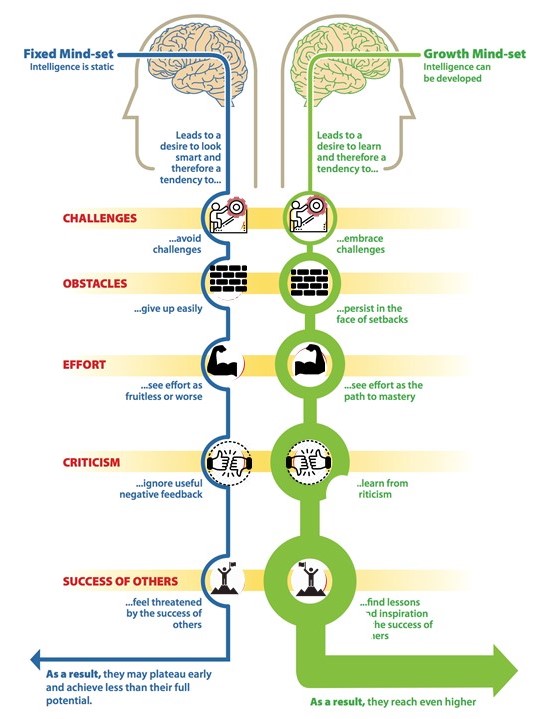
ROLE MODELS OF GROWTH MINDSET
There are uncountable number of role models who practise growth mindset. Just to name a few famous ones
….Einstein’s teacher said that he was ‘academically subnormal’
…..Walt Disney was told that he lacked ‘creative imagination’
….Michael Jordan’s coach said that he wasn’t more talented than other people… Here’s a video of Michael Jordan on his failures and successes. What have you learnt about effort in Michael Jordan’s case?
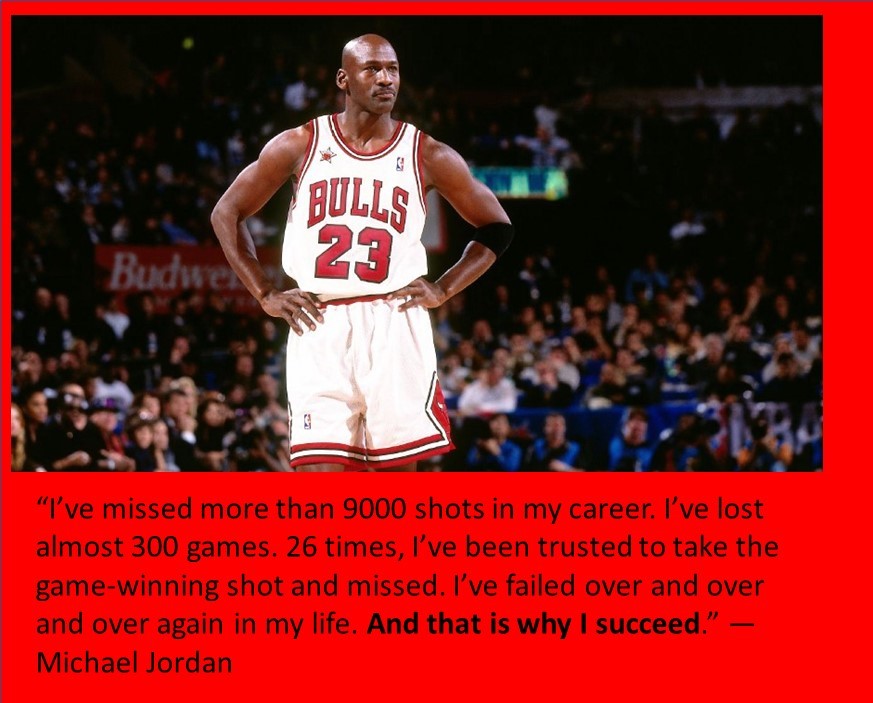
WHAT CAUSED US TO HAVE A FIXED OR GROWTH MINDSET?
Out of these two mindsets, which we manifest from a very early age, comes our belief about whether or not we believe we can succeed at whatever we want to be. We are not what other people said we were at a young age. You might recall in your childhood someone saying to you, “Your composition writing is terrible. You just cannot swim. You are not a good swimmer.” Are they wrong? Did you feel disempowered? Here’s the good news. No matter your current mindset, you can adopt and nurture a growth mindset but you have to work at it.
WHICH MINDSET DO I HAVE?
Some people do have a combination of growth and mindsets, in different areas of our lives and whilst many have a more dominant mindset over the other. Just knowing about the two mindsets can make us think and act in new ways.
CAN I CHANGE MY FIXED MINDSET TO A GROWTH MINDSET?
It is possible to change your mindset from one that is fixed to one that is willing and able to grow. The first step is to recognize your fixed mindset tendencies and beliefs and correct them.
HOW DO I CHANGE MY MINDSET?
Once we can spot the thoughts, words, and actions that go with the fixed and growth mindsets, we start catching ourselves in fixed mode and we can learn to switch into growth mode.
Here are 5 ways you can try to develop the habit of getting into the Fixed Mindset
- Try new things. Experiment. Make mistakes and correct them along the way. Reject what doesn’t work after trying to see what might. Tweak, iterate, and maintain an upward trajectory in effort and progress.
- View challenges as opportunities: Having a growth mindset means relishing opportunities for self-improvement. Learn more about how to fail well. Attack a small challenge until you succeed. Learn how to code or cook.
- Check and change your inner voice: What are your thoughts telling you? Check them for fixed mindset thoughts! And start re-framing your inner thoughts into growth mindset thoughts. For eg, after you have encountered a setback, instead of saying, “I am bad at this”, say “I can improve with effort and practice and I will see results.”
- Stop seeking approval: When you prioritize approval over learning, you sacrifice your own opportunity for growth. Try doing something well at work and don’t tell anyone. Let the recognition come to you.
- View criticism as a positive: You don’t have to use that over-used term, “constructive criticism” but you do have to believe in the concept of being positive leads to learning.
If you would like to arrange for a Growth Mindset/Fixed Mindset workshop or a Growth Mindset lunchtime talk , please contact us to customise based on your requirements. Do share with us WHY you would like to have the talk/course, your requirements and duration. Thank you.
If you find this article useful, please look out for our Growth Mindset resources on:
- Why Having A Growth Mindset Matters To You
- 15 Ways To Develop A Growth Mindset
- How To Maximise Your Personal Development with MBTI and Growth Mindset
- Learning Videos on Growth Mindset and Fixed Mindset
- Why Companies are recruiting employees with a growth mindset
- Why Growth Mindset Should be part of your personal brand
- How A Fixed Mindset Killed Kodak The King of Film
